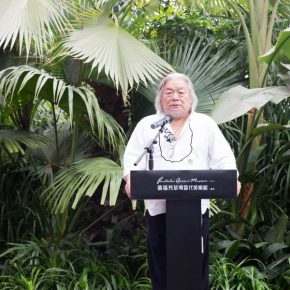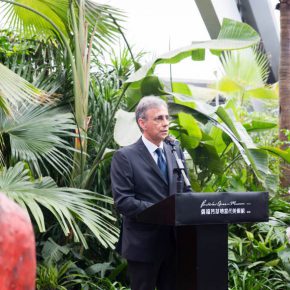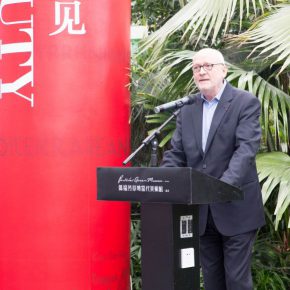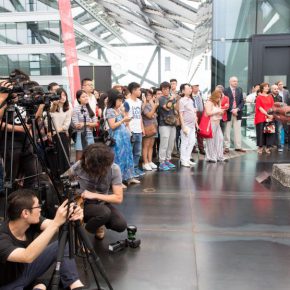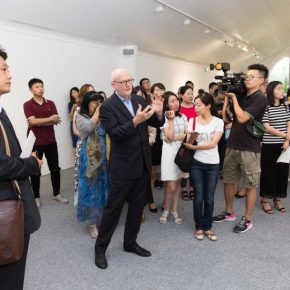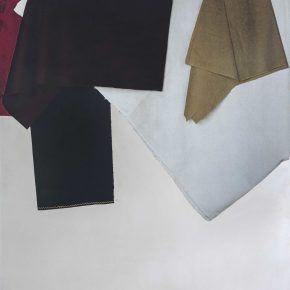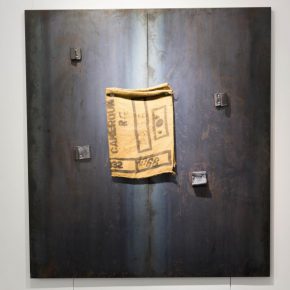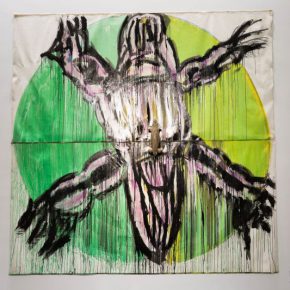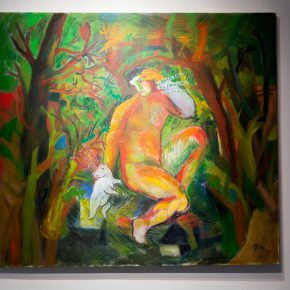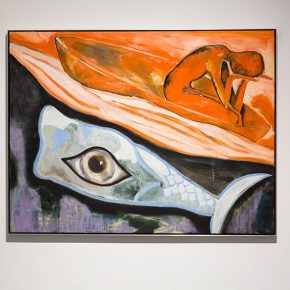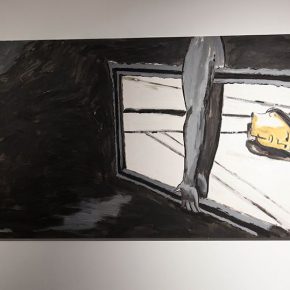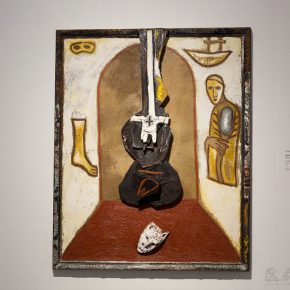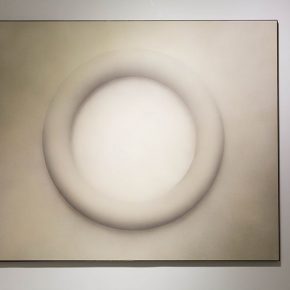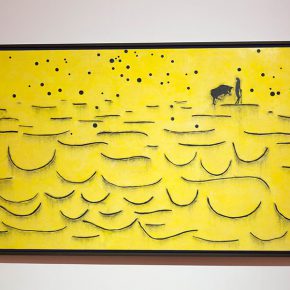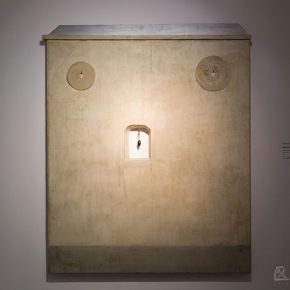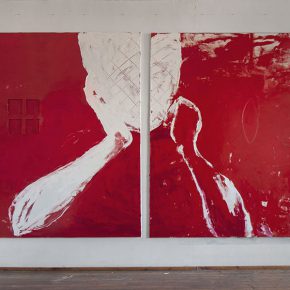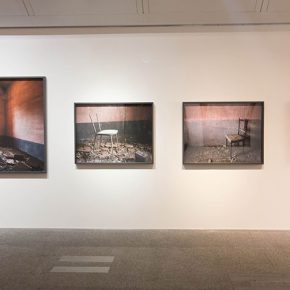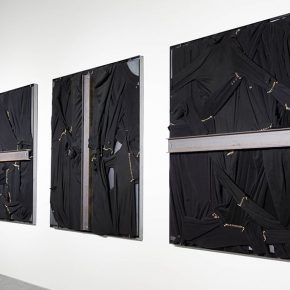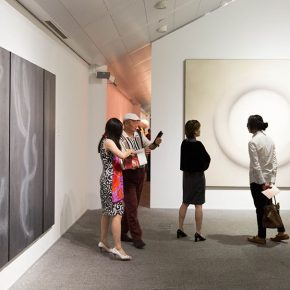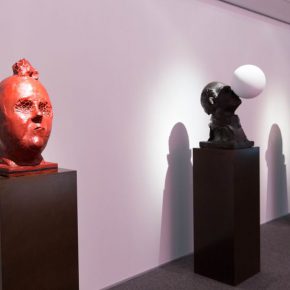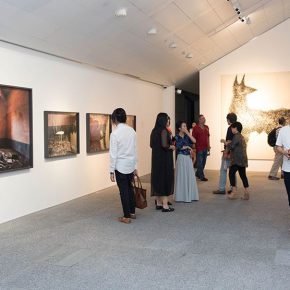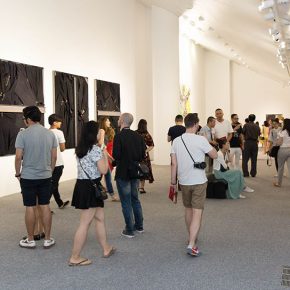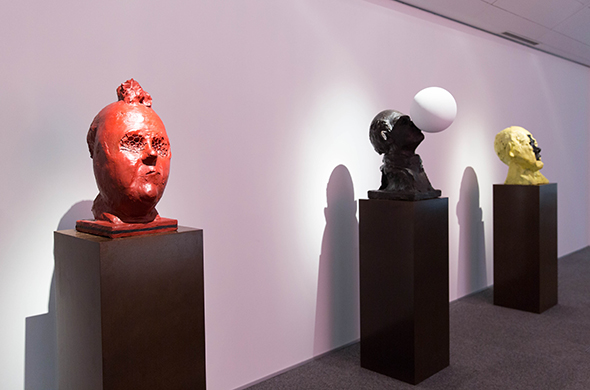
On July 16, “Challenging Beauty – Insights of Italian Contemporary Art” opened at Parkview Green Museum, featuring the most representative works of George Wong’s Italian Contemporary Art Collection, although the show is a private collection, it systematically and clearly presents the development of the artistic context and the state of Italian Arte Povera, Transavantgarde and New Roman School, it manifests the diversity and poetic richness of artistic thinking and ethical responsibilities established in the 1980s and 90s, which continue to influence the creative activities of many younger contemporary artists today. It is curated by the internationally acclaimed curator and art historian Lorand Hegyi.
Italy is the birthplace of Renaissance, with an extremely important influence on the art development of the Western classical and modern periods, the development of Chinese contemporary art is widely influenced by the art of the United States, UK, etc., but rarely concerns the contemporary art in Italy, actually Italian contemporary art is still an important part of international art today. The Research Fellow from the Chinese National Academy of Arts Wang Duanting said that, Italian contemporary art reflects a rule of “negation of negation”: Arte Povera fights against abstraction, changing “anti-art” to art, while Transavantgarde returns to representational painting and easel painting.
Challenging Beauty – Insights of Italian Contemporary Art is unique in its reflection of the complex, fascinating and eclectic Italian artistic practices from the 1960s to the present day through collector George Wong’s personal preferences and passionate interest for Italian contemporary art. This exhibition does not set out to provide an exhaustive overview of Italian contemporary art practice from the post-war era to the most recent developments, but it does aspire to present the richness, the complexity and the eclectic, multifaceted nature of contemporary Italian art and to demonstrate the strong and widespread impact artists from these generations have had on a global level. The exhibition is divided into three parts according to Italian contemporary art genres.
The Arte Povera manifests a variety of concepts and practices by the pioneering artists of the 1960s and 1970s, manifesting in the radical rethinking of art, as well as the repositioning and re-contextualization of artistic practice in the actual sociocultural situation. After a period of different forms of spiritual abstraction and utopian universalism, the artists of Arte Povera tried to formulate their own approach to time, material, movement, body, nature, to cultural metaphors, to action, intervention, change, evolution. It features the works by the artists of Arte Povera including Alighiero Boetti, Giuseppe Penone, Michelangelo Pistoletto, Mario Merz, Jannis Kounellis, Salvo, and Aldo Mondino.
Transavantgarde is the Italian version of Neo-expressionism, the development of contemporary art made it difficult to distinguish art from non-art and general action in life. The emergence of conceptual, performance and readymade art in particular left Western art absurd and ideal. Transavantgarde did exactly the opposite, and focused on the reemergence of image and form, the appropriation of traditional patterns, a compromise between tradition and modern, the most primal desires and instincts of man, individual, mythical and religious content, all things connect to our innermost emotions. The works by the well-known “Three C’s of the Transavantgarde”, including Sandro Chia, Enzo Cucchi, Francesco Clemente are on show in this section.
The newest one is so called the New Roman School—also known as Ultima Generazione, Gianni Dessi, Bruno Ceccobelli, Pizzi Cannella, Giuseppe Gallo, Nunzio and Marco Tirelli were the main figures of the “Ultima Generazione”. Their intellectual approach to the tradition of the Renaissance and Mannerism, as well as Romanticism, Symbolism, Metaphysical Art and the different forms of the spiritual abstraction after 1945, basically Lucio Fontana’s “Concetto Spaziale” and certain elements of the Arte Povera, predestined them to create a wholly new form of eclectic intellectualism, which reflects both the crisis of long-surviving conceptualism and the short-lived Transavantgarde. The New Roman School promoted an intellectually prepared and historically based heterogeneous visual-plastic language based on the postmodern deconstructive methodology from one side and on the appreciation of the so called “micronarratives” on the other.
The day before the opening ceremony, Parkview Green Museum also held an academic colloquium of the same name, Shao Yiyang, Deputy Dean and Professor of School of Humanities, CAFA, Wang Duanting, Research Fellow from Chinese National Academy of Arts, Zhang Gan, Deputy Dean and Professor of Academy of Arts & Design, Tsinghua University, artists Gianni Dessi, Giuseppe Gallo, Ugo Giletta, Marina Paris attended the discussion which was hosted by the curator of the exhibition Lorand Hegyi. The discussion was around the exhibition to discuss two topics, including “Sensitivity of History and Place of Creation” and “Revisiting the Narrative of Contemporary Art”. The exhibition remains on view until October 15.
Text and photo by Zhang Wenzhi/CAFA ART INFO
Translated by Chen Peihua and edited by Sue/CAFA ART INFO


